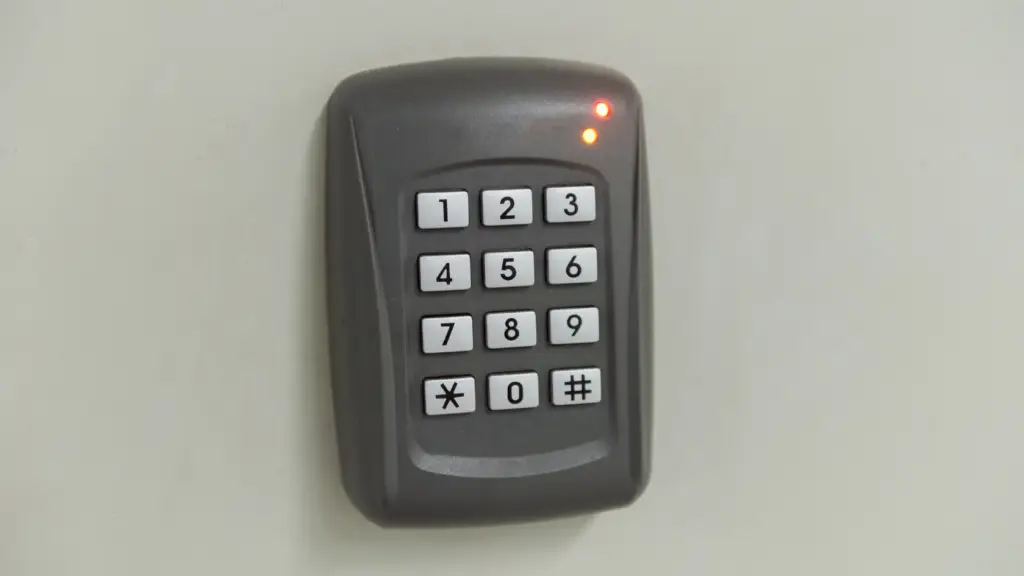Last week, as part two of our church facility staffing series, we ended with the following question: How can you recapture 11.5 hours a week? Is that even possible?
Hint: It is. But you have to be intentional and take action.
In the following paragraphs, we will evaluate action items to help you accomplish this goal.
1. Use a CMMS Effectively
A CMMS is a Computerized Maintenance Management System. Through utilizing a CMMS, like ike eSPACE Work Order Management, most people save 3-5 hours a week, according to our surveys, client conversations, and other companies’ data. For the sake of this formula and to err on the conservative side, we are only using 2.5 hours a week of recaptured time. Some of the benefits we have heard include are as follows:
- More organized processes
- PM reminders
- Historical data
- Vendor and tech management,
- Accountability
- Analytics
SUBTOTAL: 2.5 Hours of the needed 11.5 hours
2. Integrate Event Calendar to HVAC System

As we have reported before, our survey and benchmarking report show that churches that integrated their HVAC to their event scheduling software (i.e. eSPACE) were realizing a savings of 1-6 hours a week. If we use only 3 hours a week, that is a conservative estimate and still has a great impact on the goal of 1:50,000 SF.
SUBTOTAL: 5.5 Hours of the needed 11.5 hours
3. Communication Improved Through Software Applications
This is one that is generally overlooked. We have heard from dozens of event and facility management leaders about the time they are saving themselves, their teams, and the overall church staff by utilizing software to communicate facility-related matters. For this formula, we are only using 1 hour a week. But we believe that it has a huge compounding effect as it is not limited to one person. Some of the benefits are as follows:
- Reduction in email
- Reduction in having to track people down
- Enhanced details
- Accountability
- Reduction in re-setting up for an event
- Clarity of reported work orders
SUBTOTAL: 6.5 Hours of the needed 11.5 hours
4. Provide Smart Devices For Staff

If you are going to get the full benefit from a CMMS, event management, system integrations, and other software applications, you need to provide your team with the right tools to make the most of these systems. And they need to be trained on how to utilize the device and the applications.
We have seen numerous churches purchase relatively inexpensive tablets for their facility (and janitorial carts) to utilize all day. Churches have reported that this has saved their team hours each week, not to mention ink and paper. We are going to be conservative and say it should save a minimum of 1 hour per week per full-time equivalent. Envision the following uses and benefits:
- No need to print out work orders or room setup reports
- Real-time checking of urgent work orders, as reported
- Real-time logging of completed work orders without having to go back to a central computer
- Immediate access to inventory data
- Ability to attach images to work orders
- Access to warranty manuals, floor plans, past work history reports, and so much more
SUBTOTAL: 7.5 Hours of the needed 11.5 hours
5. Incorporate Predictive Maintenance (PdM) Initiatives
This is fairly new in the church world. Our team is diligently working toward a solution that is affordable and effective for nearly every church. The utilization of these initiatives will save time and increase operational efficiency. And it could very well save you large amounts of money, frustration, and downtime. While this is still being developed, we are going to be extremely conservative and say it will save 1 hour a week. But imagine the following:
- If your HVAC units start to “wobble” or shake and a sensor notifies you and creates a notification in your CMMS, you can check on the issue before the belt brakes, or the flywheel comes off.
- You are able to detect water leaks and be alerted before there is any serious damage.
- You are notified that you have a breaker or a breaker box that is overheating before a fire is started.
- You know when the CO2 levels are getting too high in your worship space, and you are notified that you need more fresh air in the room.
- If you have a pipe organ or ornate wood trim in your worship space, you are alerted as the humidity starts to fall outside the acceptable range for that space.
SUBTOTAL: 8.5 Hours of the needed 11.5 hours
6. Integrate Your Event Calendar With Your Door Access System

Now, this assumes you have a door access system. If you don’t, we strongly encourage it. The management of keys is time-consuming and ineffective. If you use keys, how many people have them that you don’t know about? Moving to at least one central door access can save you time by not having to lock/unlock doors manually or keeping a key log. But more than that, if you have an access system (or will soon have one), how many people on your staff know how to use it? Are there many instances when a door must be unlocked when an event/activity is not involved? Probably not.
As such, think of the time that could be saved if the door access could be triggered when an approved event is initiated based on the scheduled times of the event. No need for you to enter the data in a door access system that someone else has already entered into the event management system (i.e., eSPACE). No need for you to run around the building locking and unlocking doors. This should save a minimum of 1 hour per week.
SUBTOTAL: 9.5 Hours of the needed 11.5 hours
7. Ability to Close Areas for Scheduled Maintenance
This option starts to take us down the road of operational performance while utilizing the right tools.
Imagine this scenario: You decide to paint the nursery in your kids’ department. You run to the store and buy all the needed supplies. You cancel all your other activities for the day to focus on this task. As you start to cart everything down the corridor, you are greeted by the sound of kids playing in the kids’ wing. You think to yourself, ”Ok. That is odd.” As you turn the corner and arrive at your destination, a Bible study group decided to move their regular meeting from yesterday to today. They did not tell you as the room was available on the calendar.
Now, you have wasted several hours and have no plans for the rest of the day. Let’s assume you need to do about 15 projects a year. On average, we assume you can save 1 hour per project by closing spaces in your facility on your calendar for maintenance (i.e., integrating your event management calendar with your CMMS). Therefore, that would save you 0.25 hours a week. While that may sound trivial, the compound effect of all of these small, easily overlooked time robbers adds up.
SUBTOTAL: 9.75 Hours of the needed 11.5 hours
8. Have Materials Delivered Rather Than Send Techs to Shop

This change has nothing to do with technology. This is mindset and behavior. How often does your staff need to run to the store for supplies? Once a week? A month? Once a day?
This obviously will vary from church to church and is heavily influenced by your physical location in relation to these retail outlets. For the sake of this formula, let’s assume it is only once a month (I assume it is more than that). You can rarely drive to the store, shop for what you need (and likely things you don’t), check out, and drive back to the church in less than 1-2 hours. And in many cases, it could become 3-4 hours.
On average, that could be 2 hours a month at minimum. Therefore, you could save 0.5 hours a week if you had items delivered. Yes, having supplies delivered requires planning and foresight. You may have to wait on a part, but what else can you do while waiting?
Note: We realize there will be times when you must have the part right now. But for scheduled projects, we should be more intentional.
SUBTOTAL: 10.25 Hours of the needed 11.5 hours
9. Proper Tool Procurement and Placement
Where did I leave that hammer? Has anyone seen my drill? Who took my 6-foot ladder? Does any of those sound familiar? I know that I waste an inordinate amount of time when I can’t locate a tool. I know I have it. When was the last time I used it?
You get the point. We have projected to exert (waste) 1-2 hours a week due to poorly organized tool placement and procurement. We will lean toward the lower end of 1 hour per week for this exercise. Therefore, consider adapting the following:
- Specialized work kits for a certain task. These are like specialized “go bags” for projects, especially those you perform semi-regularly.
- Assign tools to individuals, so you don’t need to wonder who has what.
- Inventory your tools monthly to ensure everything is returned and in its rightful place or replaced if needed.
SUBTOTAL: 11.25 Hours of the needed 11.5 hours
10. Proper Ladder Distribution

Ladder use is not a task to be taken lightly. Remember, your church is subject to the same OSHA requirements and regulations as any other organization. You need to have the weight limit posted and proper operation consideration. In addition, you need the right size ladder for the proposed use.
As a rule of thumb, you should not have to walk further than two portable fire extinguisher locations for the proper-sized ladder for the area being served (about 200 feet). If you have multiple floors in your facility, you should have ladders available on each floor. Therefore, we project that if you follow these simple guidelines, you could reclaim 0.5 hours a week.
Tip: While we are talking ladders, have you heard of the 4-to-1 Rule? This will help you establish the height of the ladder you may need for a specific project.
SUBTOTAL: 11.75 Hours of the needed 11.5 hours (Boom!)
11. Develop a Standardized Paint Scheme

Have you ever performed spot painting on your church corridor walls to then looked at it after it dried and see slight color variations and sheens that do not match? That is pretty common.
This option for recapturing time may not be really popular with interior designers and architects, but it is a proven method for increasing operational efficiency. This does not imply that you do not have multiple colors of paint in your facility. But it does mean you should have a standardized scheme. Our team has seen firsthand how this approach can allow you to recapture an average of 0.5 hours a week, not to mention a facility that always looks fresh. Here are some considerations as to why a standardized paint scheme is helpful:
- Reduces the need to search through different colors and sheens
- Reduces setup, prep, and cleanup time for minor repairs
- Allows for touch up without having to repaint entire walls
- Can reduce paint storage to the limited options in the scheme
SUBTOTAL: 12.25 Hours of the needed 11.5 hours (Keep it coming!)
12. Effective Inventory Management
This is about intentionally organizing, maintaining, and systemizing your stored inventory related to facilities. The old adage says, “A place for everything and everything in its place.” The notion here is that everything should have a place to be stored and returned there when not in use. When that philosophy is adopted, we do not spend an inordinate amount of time searching for things. And we don’t buy something we already had but could not find. While we believe this could be the same time recovery strategy as tools, we are going to only apply 50% of that value and use 0.5 hours per week.
SUBTOTAL: 12.75 Hours of the needed 11.5 hours (Now we are just showing off!)
In Conclusion: You Can Reclaim Those 11.5 Hours
The 12 strategies above could increase your staffing ratio from 1:35,000 to 1:50,000. Let me reiterate. The goal is not to eliminate roles or staff. Let’s face it; you are already understaffed. This goal is to increase your operational efficiency. In turn, this should assist with better maintenance and management of your facility and ultimately reduce deferred maintenance without hiring additional staff.
Reclaiming those 11.5 hours should allow your team to do things only humans can do. Like getting on the roof, performing daily inspections, negotiating better contracts, and staying current with all preventive maintenance. You need to invest it as a Facility Steward. In addition, you can implement most, if not all, of these strategies for a fraction of the cost of that full-time equivalent.
That is a win. It is time to take action!







